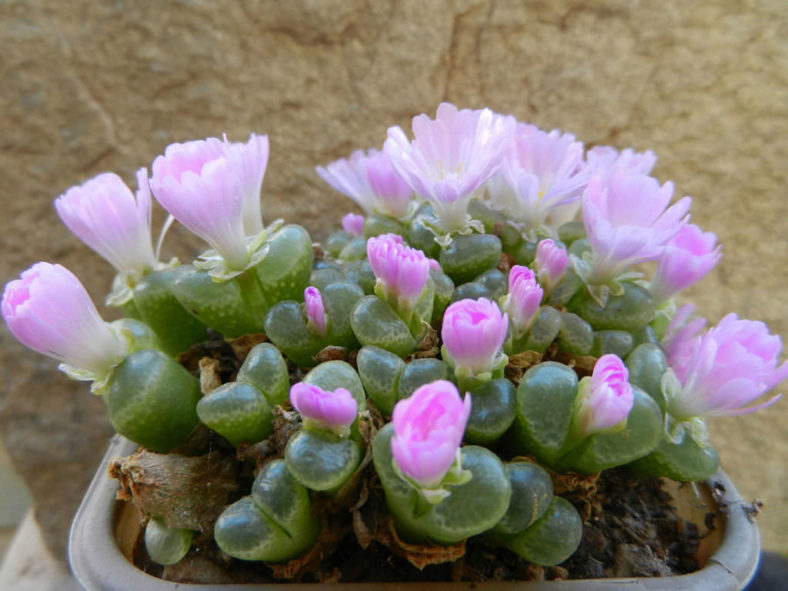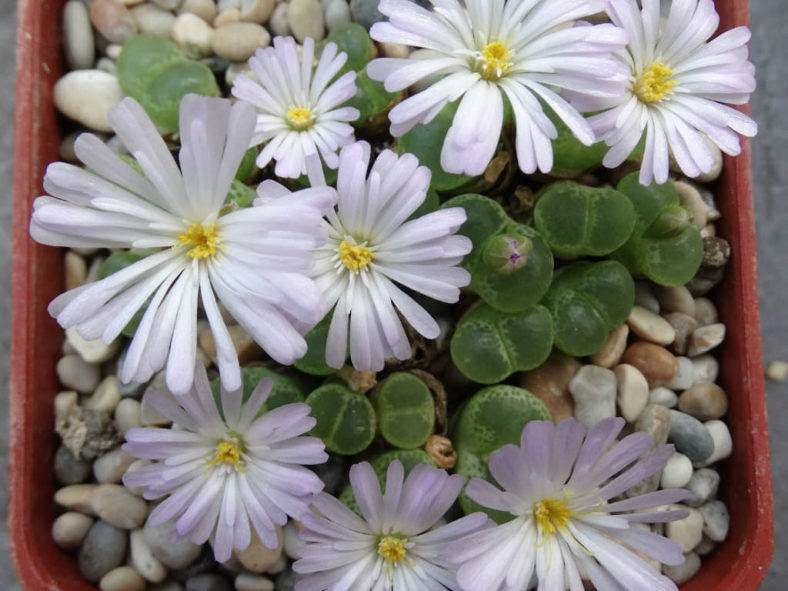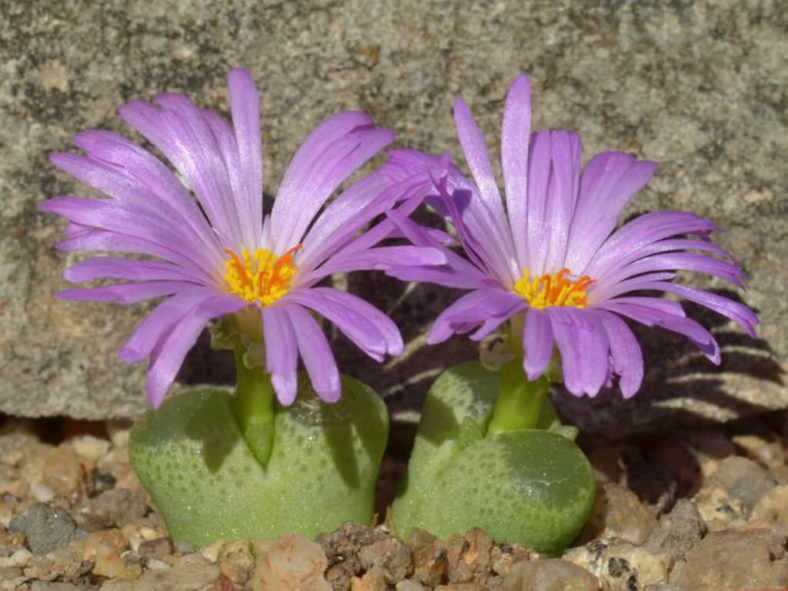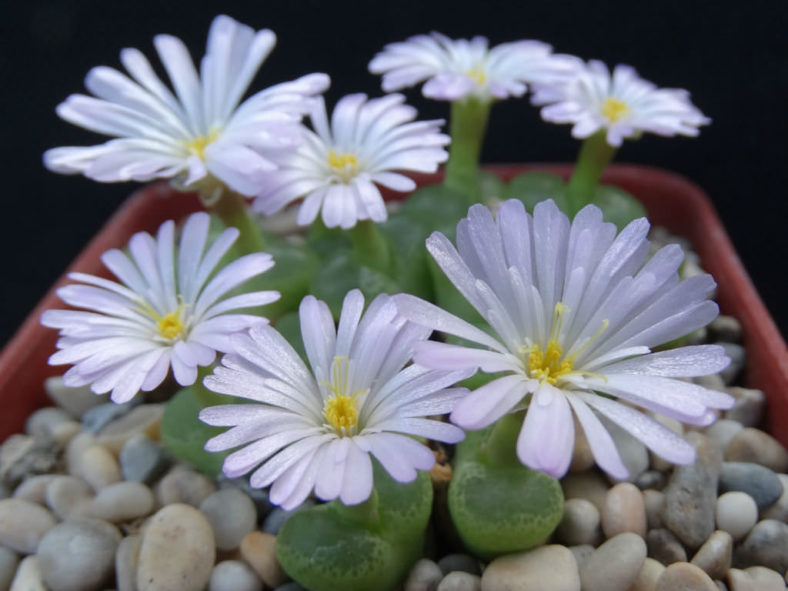Scientific Name
Conophytum limpidum S.A.Hammer
Common Name(s)
Eye Leaves
Synonym(s)
Ophthalmophyllum limpidum
Scientific Classification
Family: Aizoaceae
Subfamily: Ruschioideae
Tribe: Ruschieae
Genus: Conophytum
Origin
Conophytum limpidum is native to South Africa. It grows in vertical crevices from Pellaberg to the east of Pofadder in the Northern Cape province.
Description
Conophytum limpidum is a dwarf succulent with bodies consisting of a pair of fleshy leaves fussed into cylindrical to inversely heart-shaped bodies. It can form a clump of up to 10 bodies. The bodies are bilobed at the apex and can grow up to 1.2 inches (3 cm) tall, with the upper surface measuring up to 1 inch (2.5 cm) long and 0.5 inches (1.2 cm) wide. They are bright, shining green leaves, often reddish-green when young, strongly windowed at the apex, and with some scattered windows extending down the upper sides. When stressed, the bodies become yellowish-green.
The flowers are diurnal, scented of cherry blossoms, and appear in the fall, often paired with the second flower occurring a month later. The petals are narrow, range from pale pink and rose pink to white, and measure up to 0.6 inches (1.5 cm) long. The stamens and stigmas are yellow to saffron yellow.

Hardiness
USDA hardiness zones 10b to 11b: from 35 °F (+1.7 °C) to 50 °F (+10 °C).
How to Grow and Care
Most Conophytums need bright light but do not like too much intense sunlight. To avoid sunburn, place them in a position to receive a few hours of full sun in cooler periods of the day.
These plants thrive best in a porous growing medium that will drain quickly. Use a commercial succulent soil specially designed for growing succulents, or make your own mix.
When Conophytums go dormant in the spring, they require little or no water. When plants begin growing in the fall, it is safe to water deeply, allowing the soil to dry before watering again.
Conophytums are light feeders and do not need fertilizer if repotted every two years. It is best to feed at the beginning of the growth period and just before flowering.
These succulents will benefit from repotting. Depending on the pot's size and growth rate, they typically need to be repotted every 2 to 4 years. The best time to repot a Conophytum is at the beginning of active growth.
Conophytums are easily propagated by division. They can also be grown from seeds.
Learn more at How to Grow and Care for Conophytum.
Links
- Back to genus Conophytum
- Succupedia: Browse succulents by Scientific Name, Common Name, Genus, Family, USDA Hardiness Zone, Origin, or cacti by Genus
Photo Gallery
Click on a photo to see a larger version.


